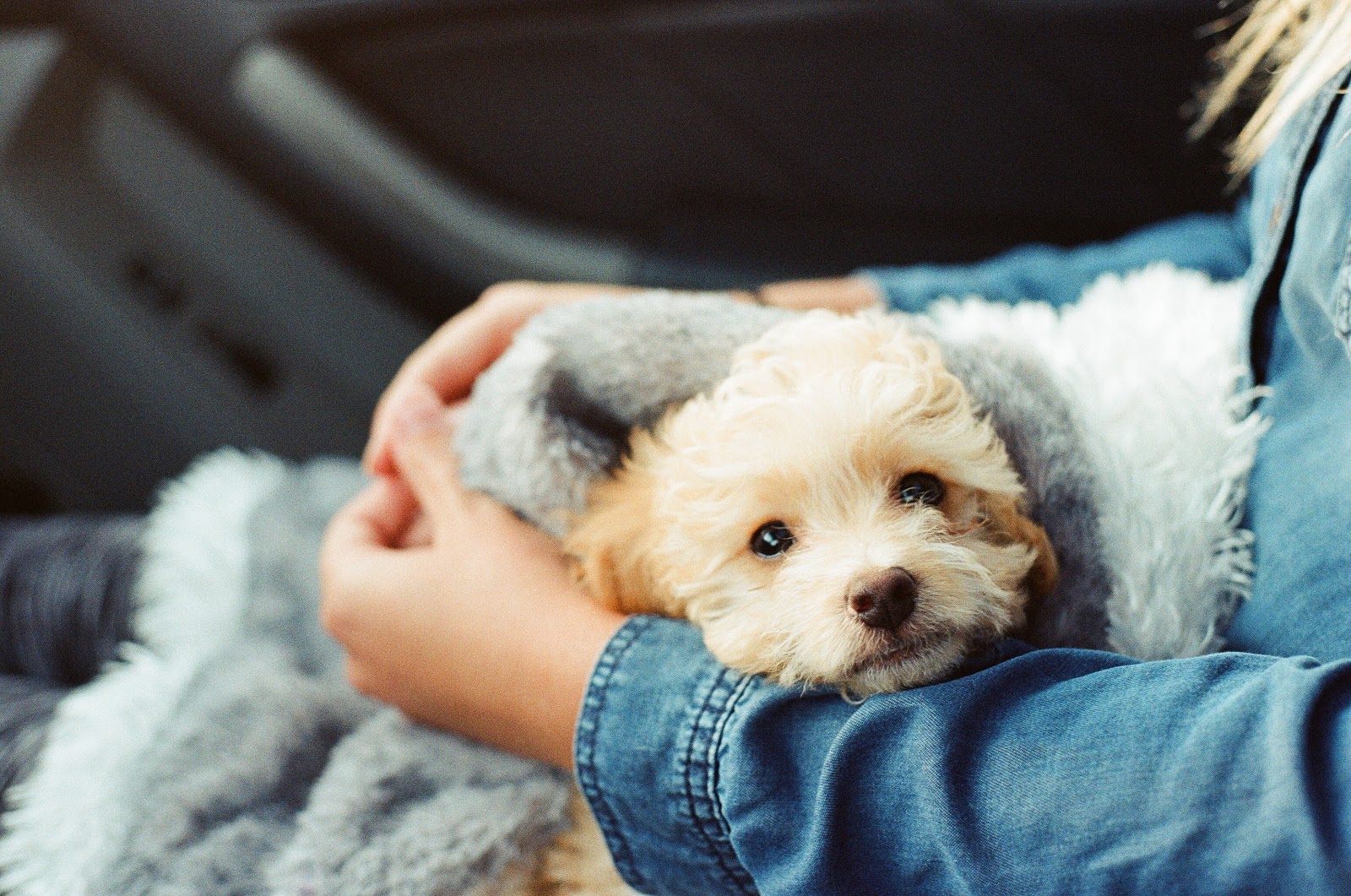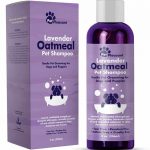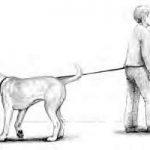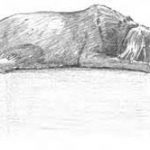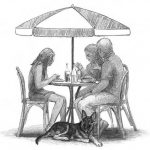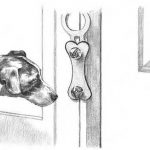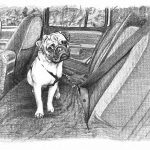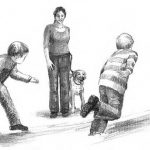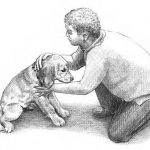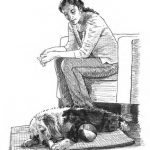In This Chapter
- Making sure your house is safe for your new dog
- Turning down your dog’s bed
- Finding the perfect place to feed your dog
- Stocking up on supplies
Clean, hide, remove, and buy. This chapter covers all the things you need to do to prepare your home for your new mixed breed — from getting rid of safety hazards to setting up his new abode. If you’ve found your dog and you’re just waiting to pick him up from the shelter or breeder, you’ve come to the right place!
Dog-Proofing Your House
Put everything away. And I mean everything! A dog who hasn’t grown up and/or been shown how to live in a home could be into anything that looks edible — from books and magazines, to eyeglasses, TV remotes, telephones, and MP3 players, your dog will see something interesting and set his teeth on it.
Remember
Your mixed-breed dog isn’t necessarily inherently destructive — not any more than a human toddler who tests everything by putting it in her mouth. He’s just investigating his environment to see what might taste good and what’s just fun to play with.
In time, you’ll be able to get your home life back to normal, but until your new mixed breed learns what he can and can’t play with, be safe — and until you can trust him — you need to keep your home dog-proofed. Not only is this better for your relationship with your dog, but it’s less of a health hazard for him (some dogs swallow things that can poison them or otherwise wreak serious havoc with their insides).
In the following sections, I fill you in on the major steps you need to take to make sure your home is safe for your new friend.
Removing chewing hazards
If your new dog is older than 2 years old, removing chewing hazards isn’t as big of a deal. This issue is more important with young dogs, because they’re still exploring their environment and tend to chew anything, especially between 3 and 9 months of age (when they’re teething). An adult dog may chew if he has separation anxiety when you’re not nearby.
Empty your trash cans daily. They’re very enticing to a dog, especially if the trash contains discarded food. Get a covered can for your kitchen, or place the can inside a cabinet so your dog can’t get into the garbage. Remember: This isn’t just to prevent a mess — the trash can include all kinds of dangerous things, like chicken bones, batteries, plant cuttings. Even the ink on paper can be poisonous or become clogged in your dog’s intestines.
Warning!
Electrical cords are a huge hazard. Not only can a dog pull on them and yank the appliance down on top of himself, but if he chews on the electrical cord, he could die. Either make sure that all electrical cords are up out of his reach, or cover them with steel conduit to prevent him from chewing the actual cord. Keeping electrical items unplugged when you’re not available to watch your dog is also a good idea.
Many household supplies — including bleach, detergents, moth balls, pine and citrus oils, insecticides, rat baits, antifreeze, and batteries — are also very dangerous to your dog. Make sure that they’re all out of reach of your dog.
Outside there are other hazards — some poisonous, others merely destructive. Put away the garden hose, any potting supplies, lounge-chair cushions, and children’s toys. If you have candles or small lanterns on tables, place them in a safe area as well — especially citronella candles. The only things you can’t put away are your landscaping plants and the large patio set, though if any of the furniture is made of wood, either put it out of reach, or cover it daily with a product like Bitter Apple. Or you can always keep an eye on your mixed breed when he’s outdoors and redirect him away from the furniture toward a toy.
Tip
If you have a garden within an area available to your dog, put a secure fence around it.
Protecting your furniture
In my house, the dogs aren’t allowed on the furniture. I’ve made this a house rule for several reasons:
– It prevents my furniture from being destroyed by muddy paws and sharp claws.
– It maintains my dogs’ understanding of their place in my household. Many dogs who are allowed on the furniture feel as though they’re superior to others (including the people in the house) and become dominant.
– It keeps my guests from being walked over by my dogs.
– What if my dogs are used to lying on the couch and they get sick? I’ve never wanted to have to clean vomit and diarrhea off the upholstery.
Tip
If you’d like to keep your dog off of your furniture, and if your new dog is a pup, have lots of nasty-tasting spray on hand to make sure he doesn’t develop a taste for wood. Several products — such as Bitter Apple, Fooey, Bitter Lime, and more — are readily available at pet shops for just this purpose.
Tip
If you’re bringing an adult dog into your home, and you think he might like jumping up on the furniture, there are things you can do to prevent this. In fact, you may want to implement them prior to bringing your mixed breed home so that he quickly learns that the furniture is off limits:
– Put things in the way so that he can’t become comfortable on the couch.
– Put a ScatMat (an electrified mat that tingles the paws when pressed) across the furniture so that if he tries to get up, his toes get a tingle. (They’re available in most pet stores or through www.contech-inc.com.)
– Place some pans across the couch so that they make noise when jostled, either chasing him off the furniture or at the very least letting you know that he’s trying it again so you can redirect his actions.
– Close off the room so that he can’t access the furniture that you don’t want him jumping on.
If you’ve read all this and you’re thinking, “Hey, half the reason I’m getting a dog is so I can curl up on the couch with him and watch movies or read a book,” you may want to look into furniture covers so your upholstery won’t be ruined by his claws. Or you can use a thick throw blanket to cover the areas where you’ll allow him to sit. You can also restrict which pieces of furniture he’s allowed up on. Maybe you let him up on the couch in the family room, but not on the furniture anywhere else in the house. Whatever works for you — the important thing is to be consistent with your dog.
Pushing up daisies: Giving your dog a place to dig
Dogs will dig. The trick is to give your mixed breed a place where he can dig without destroying your home or yard. If a dog doesn’t have an opportunity to dig (or to get some other equally fun form of exercise), he’ll search for other activities — such as chewing your furniture, digging up the carpet, pulling up linoleum, eating drywall, or something else along those lines.
Tip
Digging is a form of exercise for your dog. So, instead of merely letting him outside to race around the yard by himself, go with him. Play tag, play hide and seek, throw toys. If at any time he starts to dig, redirect him into another game. As long as he stays busy and happy, he won’t dig.
Dogs also dig to create a cool place to lie down. If it’s hot outside and your mixed breed can’t go into a cool house, he’ll dig around bushes and the house foundation. Offering a small wading pool with cool water will help fulfill this need to make a comfortable resting area. Keep the wading pool in the shade so that the water doesn’t become too hot to be comfortable. Throw some floating toys in the pool to make it more enticing. Better yet, go in there with him and splash around. It’s more fun with two!
If you’d like a place to allow your mixed breed the freedom to run and dig, partition part of your yard for this purpose.
If you have a small dog and want to set up a special play area for him, consider using some baby gates to keep him contained within a specific room. Put lots of toys, blankets, and a few small children’s outdoor play toys in the room. This may sound extravagant, but if you meet your dog’s need to dig, he’ll stay out of trouble elsewhere.
Born to run: Making sure your dog can’t escape
A secure yard is very important when you own a dog. If you got your mixed breed at a shelter, it’s likely that he became a stray because he was left in an unfenced yard and he ran away. If dogs aren’t happy, they’ll seek other accommodations. If they’re lonely, they’ll seek other dogs to socialize with. If they’re abused, they’ll try to escape. If they’re bored, they’ll look for ways to occupy their time.
Tip
The best fencing is a wood privacy fence. Not only does this offer a solid barrier, but it also keeps other dogs and pranksters from tormenting your dog. With this type of fence, your mixed breed is less likely to run the fence, chasing other dogs. The height of the fence depends on the size of your dog. A dog under 10 inches at the shoulder should be fine with a 3-foot-high fence. A dog up to 18 inches at the shoulder should be safe with a 4-foot fence. Any dog over 18 inches at the shoulder, especially one who can jump high, needs a 6-foot-high fence.
Alternatives to wood privacy fences include
– Chain link: This is a good way of keeping your dog at home — it’s just not as pretty as a nice wood fence and it doesn’t give you and your dog the same level of privacy. The same guidelines regarding height apply to chain link as apply to wood fencing.
– Wire mesh: This works well as long as it’s installed correctly. Wire mesh may be less expensive than wood or chain link, but it’s even less attractive than chain link and often not as secure. I don’t recommend this type of fencing for anything other than a small dog who isn’t prone to digging and jumping.
– Invisible fencing: This is great if you live in a neighborhood with rules against fencing. It’s also good for fencing in large areas, giving the dog lots of space to run. However, an invisible fence doesn’t keep others out, which leaves your dog open to attack from other dogs or people who are looking to steal him. Dogs learn the boundaries of an invisible fence within a week and adhere to them, though some dogs will test the collar batteries now and then to see if they can make a run for it.
Invisible fencing consists of a wire that’s buried 1 or 2 inches around the boundary of your yard and attached to a transmitter that maintains the boundary distance, most commonly set at 6 to 15 feet. The dog wears a collar that beeps if he gets within 2 feet of the set boundary. If he continues and enters the “no zone,” he gets a mild electric stimulation. Be very careful if you intend to use this type of fencing. Remain with your dog until he’s aware of his boundaries and feels comfortable enough to use the yard.
If you don’t have the luxury of being able to fence a yard, you’ll have to take your dog for walks on a leash. Walks aren’t a bad thing — they’re actually very positive, because you get to spend lots of time with your dog. In fact, even if you have a fenced yard, you should make an effort to walk your dog at least once a day. This becomes a special time that your mixed breed will look forward to.
Tip
Many neighborhoods have fenced dog parks. These areas are great for letting your dog freedom to play in relative safety. It also gives him a chance to socialize with other dogs and people — a great combination. However, some dog owners aren’t conscientious about cleaning their dog’s mess, or teaching their dogs to not play aggressively. Always keep a watchful eye as the dogs play and remove your dog from any sticky situations.
Your Mixed-Breed Dog’s Bedroom
Dogs need a place to sleep where they feel safe and secure. You have a few options, so before you bring your dog home, think about what will work best for you and your dog.
Crate or pen? Your dog’s first place to sleep
Many dogs who don’t yet know the house rules will have accidents indoors or play with something that isn’t a dog toy. Until you know for sure that your mixed breed won’t have an accident in the house or be destructive, contain him in a crate or pen when you’re not around to watch him — including during the night. This will become your dog’s private room where he can go when he wants some peace and quiet, as well as a place for him to sleep.
Furnish the crate or pen with a bowl of water, a couple of toys, and a comfortable bed (see the “Bedding” section, later in this chapter). Be sure to acclimate your dog to his bed using positive reinforcement, teaching him that it’s a nice place to be. The crate should never be used as a place of punishment, nor should the dog be imprisoned within it for long periods of time every day.
Although a crate offers the safest sleep area, a pen may work for a dog who feels too cramped within a crate. An exercise pen consists of eight 2-foot-wide side panels. The pen can be folded for storage, or opened to the full extent, giving your dog 16 cubic feet of space. If your dog likes to climb or is in any way an escape artist, a pen is not the place to contain him, because he’ll easily climb out.
Thinking outside the box: Letting your dog sleep outside a crate or pen
Warning!
Don’t let your dog sleep outside a crate or pen unless you’re absolutely sure she won’t get into trouble when you aren’t watching her.
Start by keeping him in an enclosed room, such as the kitchen (if during the day) or your bedroom with you (if at night). When your mixed breed proves reliable with these areas, you can gradually open up your house a little more.
Tip
Even if you’re adopting a dog with a proven housetraining background, you may still want to initially restrict him to smaller areas of the house because dogs sometimes soil indoors when moving into a new home.
Bedding
The type of bedding you give your dog depends largely on the situation and size of your dog. For example, a small dog can be spoiled with one of those canopy luxury beds, while a big dog might be most comfortable on a big pillow or hammock type dog bed.
The main consideration when shopping for a bed is ease of cleaning and durability. I’ve found that the beds with a structure made of PVC pipe are the hardiest and easiest to clean — you just hose them off. This is a great bed for indoors or out, and few dogs will have a tendency to put their teeth to work on them.
A good bed for the crate is a pillow or mat-type bed. Look for something thin enough to go into the washing machine, or a bed that has a removable outer shell.
Warning!
Some dogs make it a point to destroy their beds or soil on them. If your dog falls into this category, don’t give him any bedding at all until these tendencies go away.
If you live in an area where fleas are an issue, a cedar-filled bed will help control the pests and protect your pet. Cedar is a natural flea repellent and great for filling up a pillow bed, giving your dog a comfortable place to sleep. This is great for an outdoor bed or if your dog’s bedroom is located in the basement or a storage area.
Tip
Don’t buy your dog an expensive bed until he’s proven that he won’t eat it or soil it. At that point you can go and get him that bedroom set you’ve been eyeing.
Giving Your Dog a Place to Eat
The most convenient area to feed your dog is usually the kitchen, because the flooring is easy to clean and most people prefer to keep food in one area of the house. Plus, your dog will like the consistency of knowing where he eats.
Dogs should always have access to fresh water. However, if you want to prevent water spillage, offer your dog his water in a raised feeder appropriate to his size. Place this in his eating area.
Stocking Up on Supplies
Ah, the fun part! You get to go on a shopping spree for your new dog! Although it’s loads of fun to go to a huge pet-supply store, it’s also more expensive than shopping via catalog or online. (See the Cheat Sheet in the front of this book for some online resources.)
The basic supplies include a collar (more than one if you want to be stylish), a leash or two, food and water dishes, a bed (see “Bedding,” earlier in this chapter), and toys. You may also want to get a travel carrier (see Chapter
Traveling with Charley), a home crate/pen, and grooming supplies (see Chapter
Grooming Your Mixed Breed). Prior to bringing your new mixed breed home, you also need to stock up on his food (see Chapter
Chasing the Chuckwagon: The Basics of Feeding).
Collars and leashes
Many different types of collars and leashes are available. The type you choose depends on your dog’s temperament and how you intend to use the collar. If you’re using the collar to make a fashion statement, get a separate collar for training purposes. And if you have a training collar on your dog, be sure to remove it the moment you’re done with the training session.
The typical buckle or snap-on collar is great for making a fashion statement and for displaying your dog’s rabies tag, ID tag, and license.
If you’re looking to get a training collar, there are many to choose from. I recommend getting a head halter (Comfort Trainer and Halti are two good brands), a Gentle Leader Easy Walk Harness (www.gentleleader.com), or a SENSE-ation Harness (www.softouchconcepts.com).
In terms of leashes, your dog will walk best with a 4- to 6-foot walking leash that isn’t overly heavy or difficult for you to hold. I find that a 1⁄2-inch leather leash offers optimal comfort for both the dog and the person — and it lasts a long time. Cotton leashes are also generally comfortable, but not practical if your mixed breed pulls hard. Nylon is fine for a dog who doesn’t pull at all.
Dishes and bowls
Which dishes and bowls are right for your dog depends on his size and temperament. Here are a few things to consider:
– Size: If the dog is large, don’t get a dish that’s barely big enough to fit his nose. Make sure he can fit his entire face in it as he eats his food. On the other hand, you may not want to use a large bowl for a small dog. He’ll spend more time chasing down the flying kibble than eating it. For dogs with long ears, get a bowl that’s narrow at the top and flares out at the bottom — this will keep his ears from getting into the food.
– Material: If your dog is likely to play with his dishes, you don’t want anything breakable. Ceramic is out of the question, regardless of how heavy-duty it appears. If he’ll chew the dishes, you don’t want plastic ones. It doesn’t matter if the plastic is very thick — he can get his teeth into it and have a great time demolishing the dish. Also, some dogs develop contact allergies (hypersensitivity to plastic).
Tip
Stainless steel dishes are my dish of choice. They last a very long time, can’t be destroyed (even if your mixed breed has all sorts of games planned for his dinner dish), and are easy to clean.
– Elevation: Whether you put your dog’s bowls on the ground or in an elevated feeder depends on the size of your dog and how he eats. A small dog is fine with his dish on the floor. A medium to large dog should have a raised feeder if he tends to eat quickly or likes to play in his food or water. The raised feeder will prevent him from putting his paws in his food and tracking it around the house.
Toys
The types of toys you should get are totally dependent on your dog. Obviously, you want to get a toy that’s the right size for your dog so he can get the most use out of it — big dog, big toy; small dog, small toy.
Warning!
Stay away from anything that can cause choking, diarrhea, or allergic reactions. This means no rawhide sticks, chips, or edible toys that contain cornstarch, wheat glutens, or chemical preservatives. I know this rules out a lot of the things that dogs like chewing — some of which even claim to be good for dogs’ teeth and gums — but if you don’t want to have to take your mixed breed to the vet for expensive allergy tests, steer clear of these items.
There are lots of interactive toys that are safe and fun for your dog. Toys that have hollow areas to put kibble or squeeze treats (like cheese that comes from a squeeze can) are always popular.
Small dogs may do well with plush toys that have squeakers, or even vinyl squeaker toys. However, I don’t recommend these toys for dogs over 25 pounds, unless the dog has proven that he won’t shred the toy.
All dogs do well with real beef shank bones. The bones have thick walls, and are hollow on the inside, offering a great place to stuff food and treats. These toys last for years — they’re indestructible.
Tip
Hollow bones are great for dogs who teethe. They can be filled with canned food, and then frozen. Give it to the dog when you can’t watch him for an hour or two. He’ll stay busy and get some relief for his gums.
Remember
There are lots of toys to choose from. Consider the size and temperament of your mixed breed before you splurge on items that’ll end up in the garbage or lodged in your dog’s intestines. Start out with one toy and see how he likes it. Add additional toys over time. And when you’ve accumulated a bunch of toys, rotate them out, keeping some set aside in a closet or someplace where the dog can’t get them — then rotate the toys every once in a while, and your dog will think it’s his birthday all over again!
by Miriam Fields-Babineau
